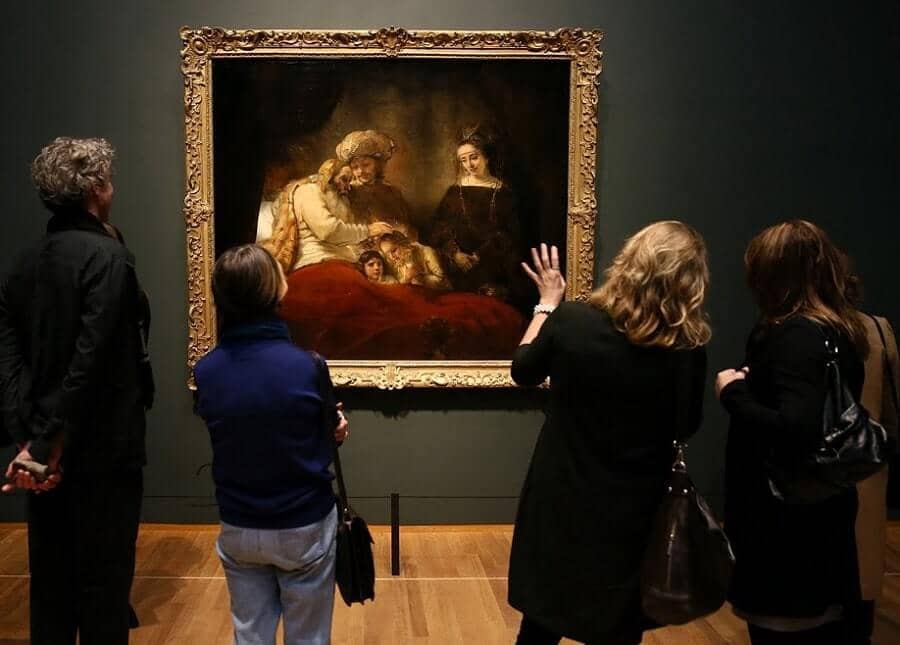Jacob Blessing the Sons of Joseph by Rembrandt

As an old man Jacob had followed his beloved son Joseph into Egypt, where Joseph, having been sold into slavery by his jealous brothers, had made a brilliant career for himself. When famine afflicted his native Israel,
he lovingly received his eleven brothers and his aged father in Egypt.
When Jacob, who had become old and blind, felt his end approaching, he let it be known that he wanted to bless Joseph's sons. According to Jewish tradition he had to bless the eldest, Manasseh, with his right hand, and
the youngest, Ephraim, with his left. But Jacob decided otherwise: he laid his right hand on the head of Ephraim. When Joseph pointed out his mistake to him, he said, 'I know it, my son, I know it; but Ephraim shall be
greater than Manasseh, his seed shall become a multitude of nations.'
From earliest times Jacob is represented in Christian art blessing with his arms crossed: the eldest son Manasseh stands on Jacob's right, but Jacob crosses his arms to bless Manasseh with his left hand. In most cases,
too, Joseph tries with a gesture to correct his father's mistake. But in Rembrandt's painting the argument between father and son is over; Joseph is supporting his father's gesture of blessing. In art Joseph's wife
Asenath is almost never present, and the Bible does not mention her. But Rembrandt could not picture such an event without their mother being present, looking thoughtful and affected by emotion.

The story of Jacob's blessing was later seen as a prophecy of the future of the Christian church. Ephraim was one of Christ's ancestors, and in blessing him Jacob was blessing the Christians. Therefore Rembrandt represents
him as a fair-haired boy.
Rembrandt chose a theatrical setting for the scene, with dark curtains on either side, the light falling on the picture from behind the curtains. The red blanket spreads out to occupy the whole foreground and creates a
distance between the events and the observer.
As always Rembrandt has paid great attention to the dress of his figures: Joseph very oriental, with his large, carefully wound turban, and Asenath, the Egyptian woman, with a headdress that is indeed of Egyptioan origin,
but which Rembrant had derived, like Asenath's retiring pose, from a medieval illustation.




















